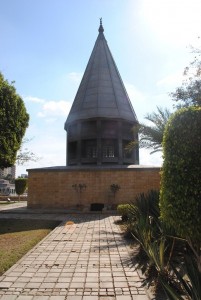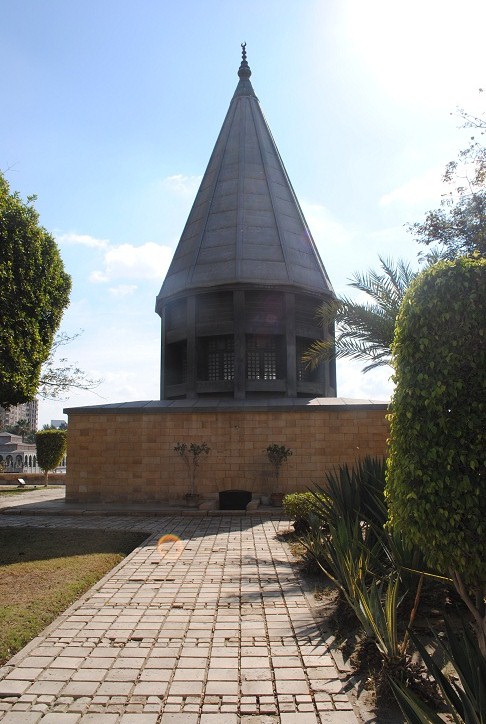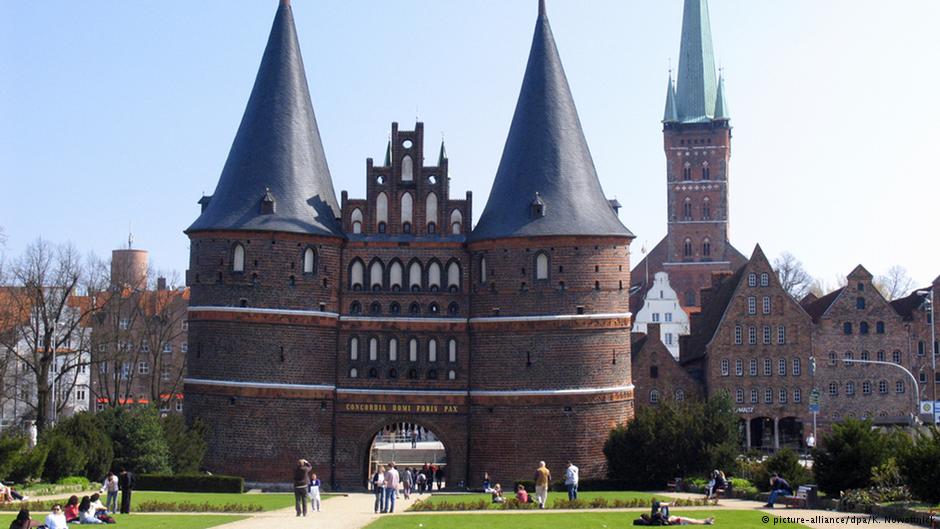
Courtesy of Abdel-Rahman Sherief
The Nilometer was how Egyptians measured the water level of the Nile River up until the construction of the Aswan High Dam. Having been traditionally an agrarian state, measuring the Nile helped predict annual agricultural production.
The tool also doubled as a public mood indicator during the medieval age for all Egyptians.
The Nilometer, located in Rawda Island in the centre of Cairo, was built by the Uzbek Muslim scientist Ahmed Ibn-Mohamed Al-Ferghani, by the order of the Abbasid Caliphate Al-Mutawakil.
Built to replace an older Umayyad model that was destroyed by a flood in 850 AD, the Nilometer consists of one deep rectangular well. Staircases were built in order to reach the bottom of the well.
Nile water flows through three holes on one side of the well. A long narrow tunnel connects Nile water to the three holes, and pits in the middle of the tunnel slow the flow of water before it reaches the well.
The well has a long marble column in its centre, supported by a wooden beam from the top and marked with 17 cubits. The ideal level of the Nile was 16 cubits; less than 16 was considered a drought and more, a devastating flood.
The taxation policy of Egyptian rulers was based on water level; taxes were only applied when water reached 16 cubits on the measurement column.
The Nilometer’s walls are covered with Kufic-style verses of the Quran, referring to the importance and significance of water in life. These ornaments are believed to be the oldest Kufic-style inscriptions in Egypt.
The tax rates imposed on Egyptian peasants varied according to the Nilometer measurements, and as a result, reading measurements had to be supervised by Egyptian judges appointed by the Sultan.
If the Nile reached the ideal level on the column, celebrations and festivals were held all around Cairo. The Nilometer was washed, scented and prepared for the reception of the King’s procession. The King would announce the commencement of a prosperous and lavish season for all Egyptians.
In 873, the Nilometer was renovated by Ibn-Tulun, and again in 1092 by the Fatimid Caliph Al-Mustanser. In 1928 a new ornamented roof was constructed on the orders of King Farouk to replace the old roof damaged by French troops during their invasion of Egypt.
The last renovation was in 2007, sponsored by the Uzbek government. A new statue was erected for the Uzbeki scientist Ahmed Ibn Mohamed Al-Ferghani. The Uzbeki president Islam Karimov attended the opening of the renovated Nilometer during his short visit to Cairo the same year.
Many tourists traditionally visit the Nilometer for its historical significance and enjoy the panoramic views of the Nile River and the South of Cairo. After the 2011 Revolution, and as a result of the turbulent security situation, many travel agencies’ tourism programs excluded the visiting the Nilometer, and has thus become largely overlooked by tourists.




